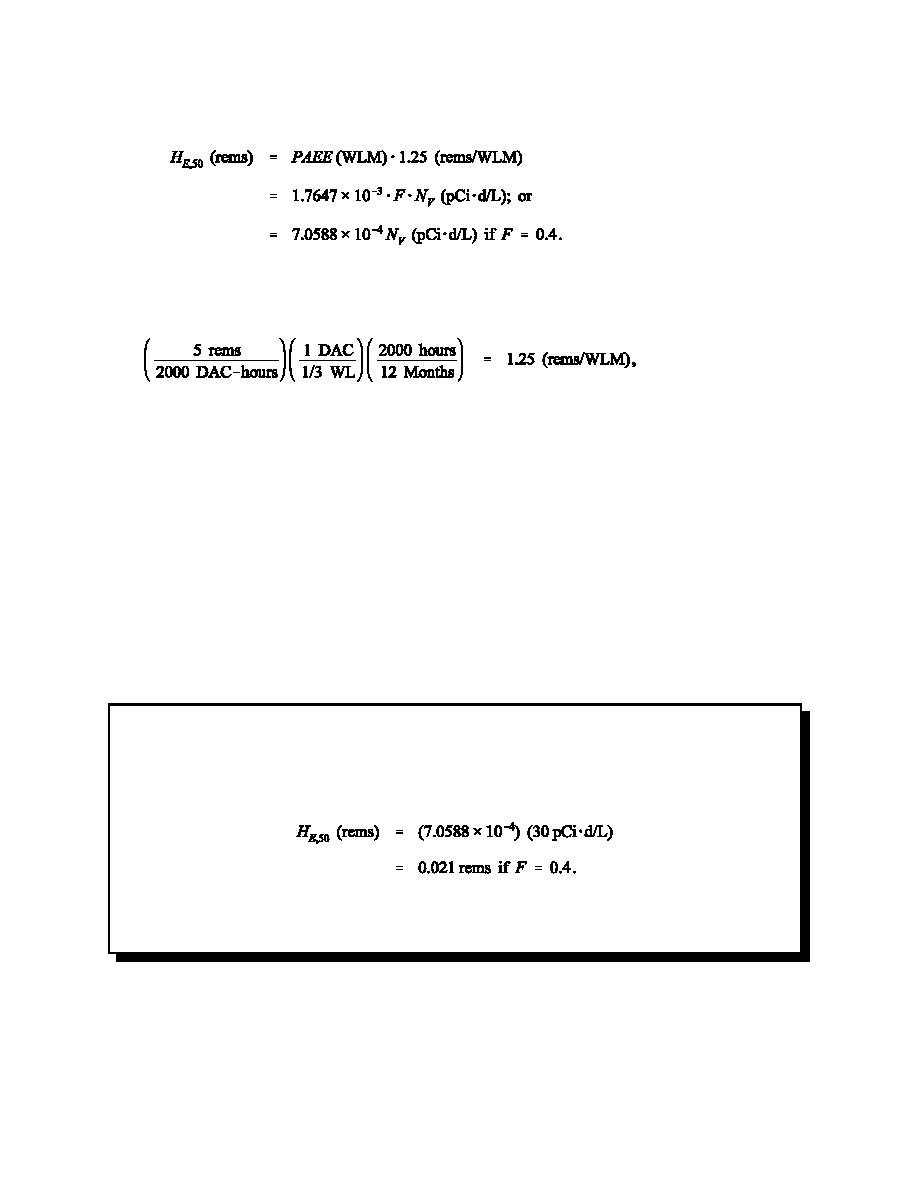 |
|||
|
|
|||
|
Page Title:
Example 7.2. Minimum Detectable Dose for a Nuclear Track Etch Radon Detector |
|
||
| ||||||||||
|
|  DOE-STD-1121-98
(36)
From 10 CFR 835 one can infer a dose conversion factor of 1.25 rems per WLM, using the
following equation:
(37)
ignoring the minor inaccuracy that the WLM is based on a 170-h occupational month, not a 166.6-hour
month (2000 h/y). Another item that does not correspond exactly is that Appendix A to 10 CFR 835
states that all DACs are based on a 1 :m AMAD. This is not the case for the short-lived progeny of
radon and thoron.
On the basis of more refined dosimetry and in an effort to make the WLM and the sievert consistent
on a risk basis, in 1994 the ICRP and IAEA adopted a dose conversion convention 5 mSv/WLM (that is,
0.5 rem/WLM) (ICRP 1993a; IAEA 1996). Thus DOE's implied dose conversion factor is larger than
that recommended in the international guidance, meaning that for the same exposure, the DOE rule would
impute a larger dose. Further, the dosimetry system specified by 10 CFR 835 does not include published
refinements based on knowledge of equilibrium factor, unattached fraction, and particle size (James et al.
1988; James 1994; National Research Council 1991; NEA 1985). Under many circumstances, the dose
for a given exposure, calculated using these refinements, would decrease. However, measurements of
aerosol size, unattached fraction, and equilibrium factor are difficult to do in the workplace, making the
refinements impractical.
Example 7.2. Minimum Detectable Dose for a Nuclear Track Etch Radon Detector
One commercial supplier of nuclear track radon detectors suitable for personnel dosimetry
reports that the minimum detectable amount for time-integrated radon concentration is 30 pCi-d/L
(9.59E7 transitions/m3). This leads to a minimum detectable HE,50 of
This value of 21 mrem is for each monitoring interval. If detectors are changed 12 times per year, the
minimum detectable dose is 252 mrem.
83
|
|
Privacy Statement - Press Release - Copyright Information. - Contact Us |